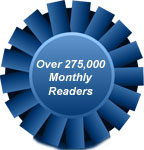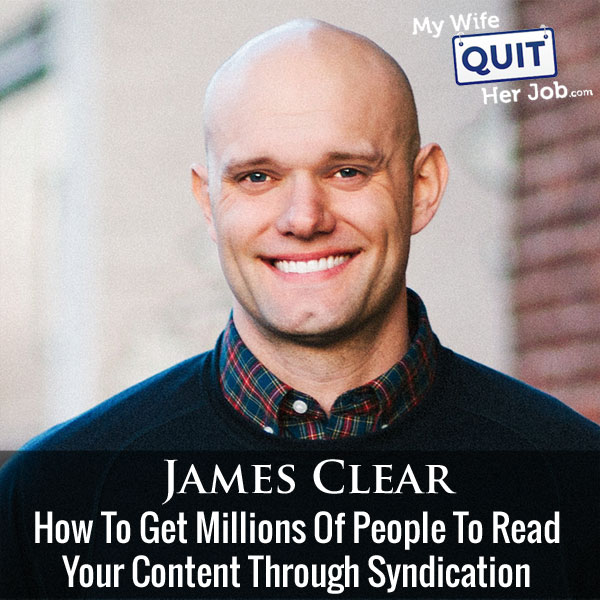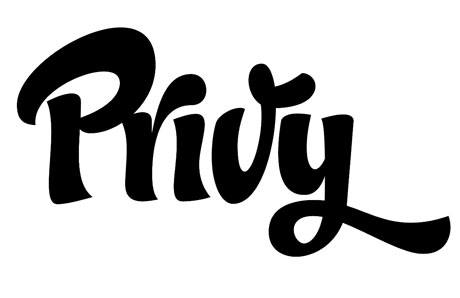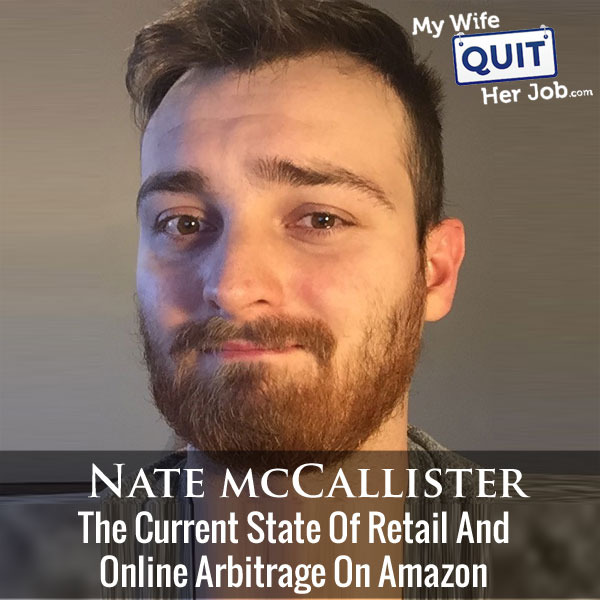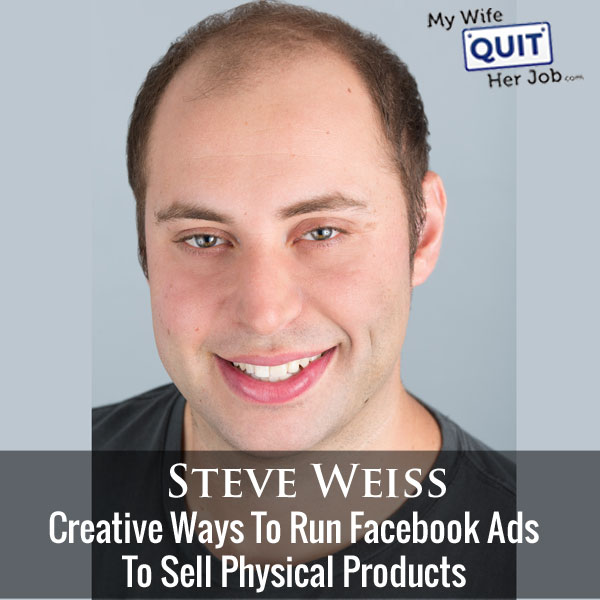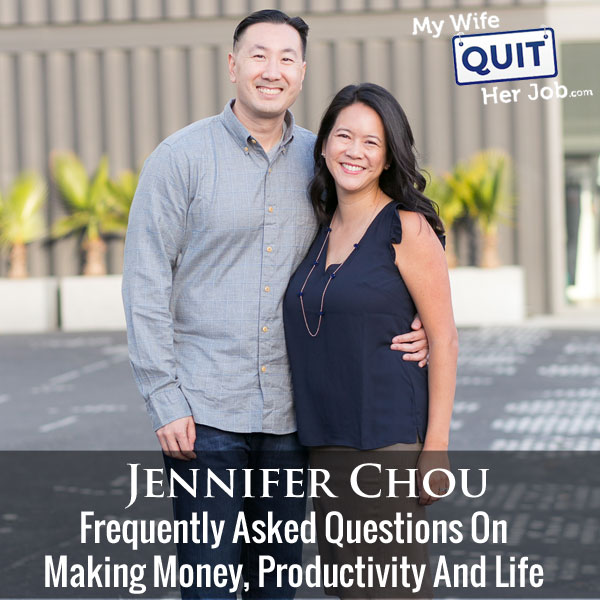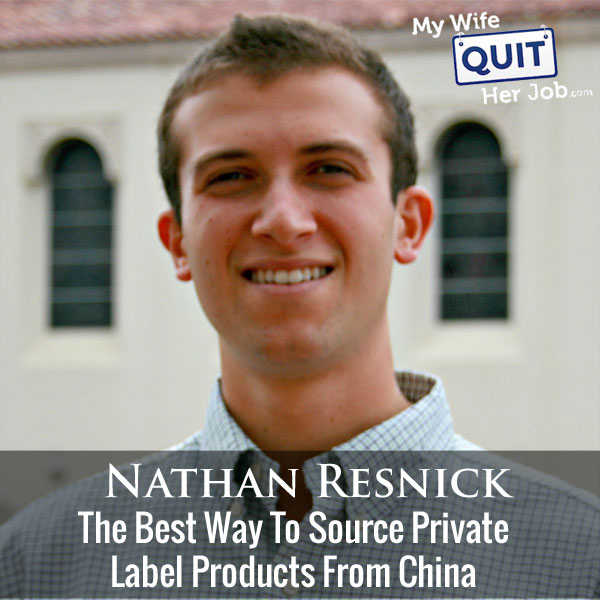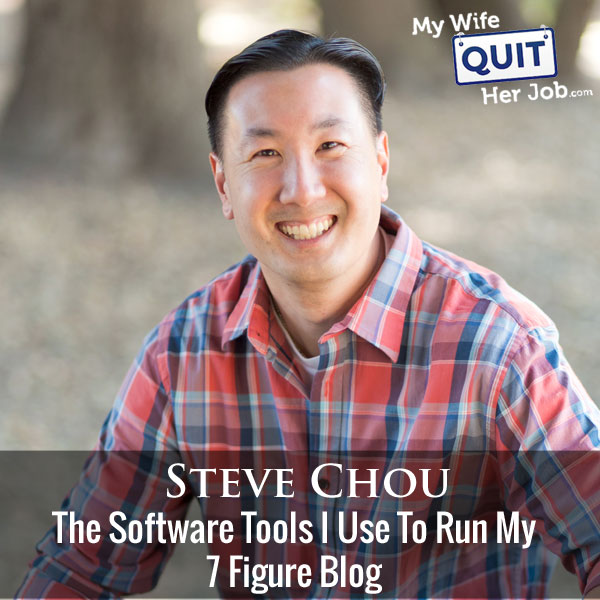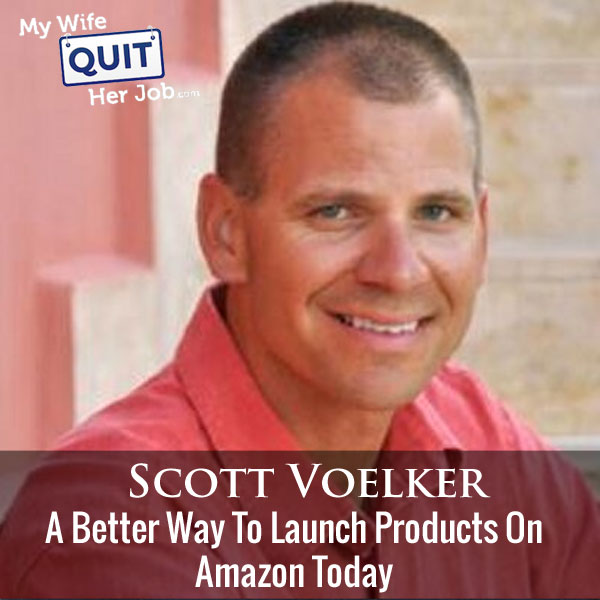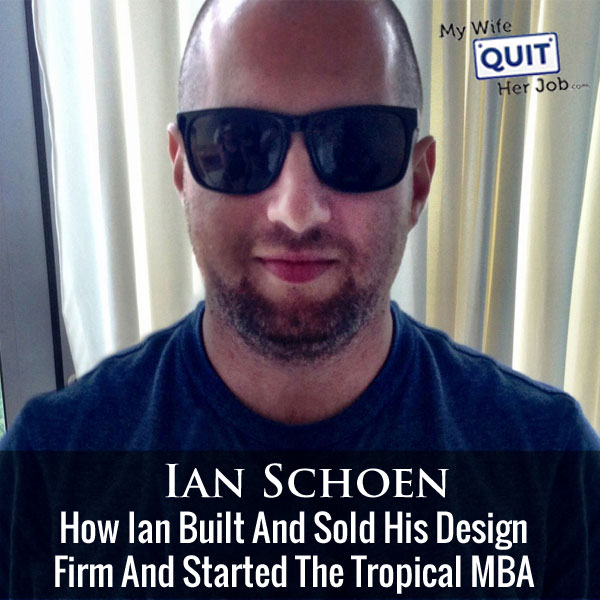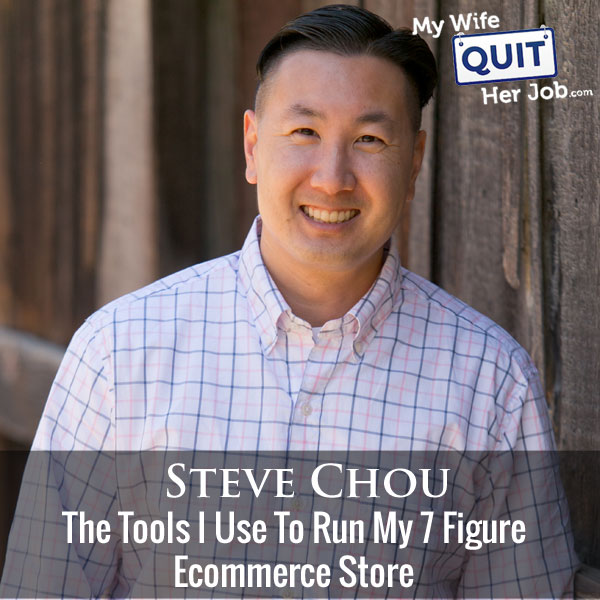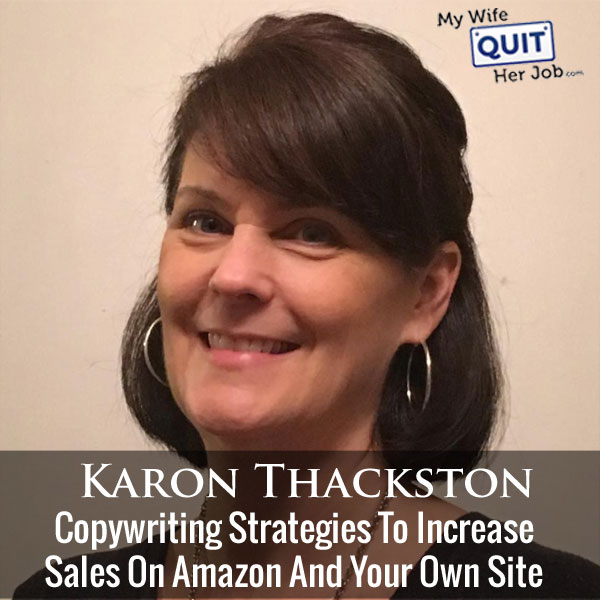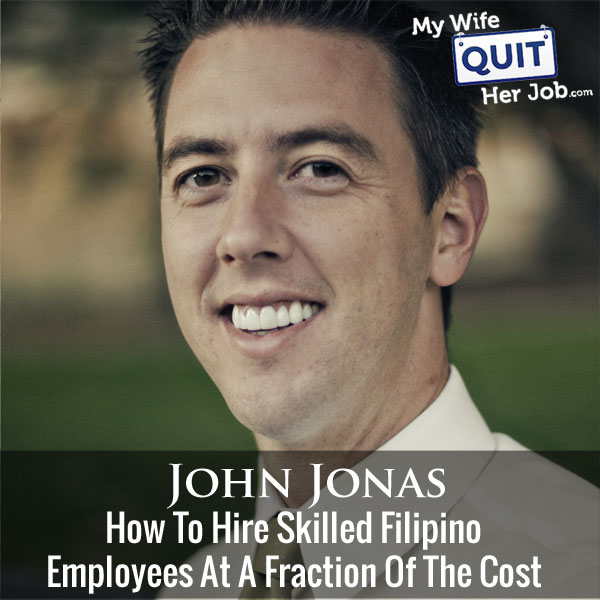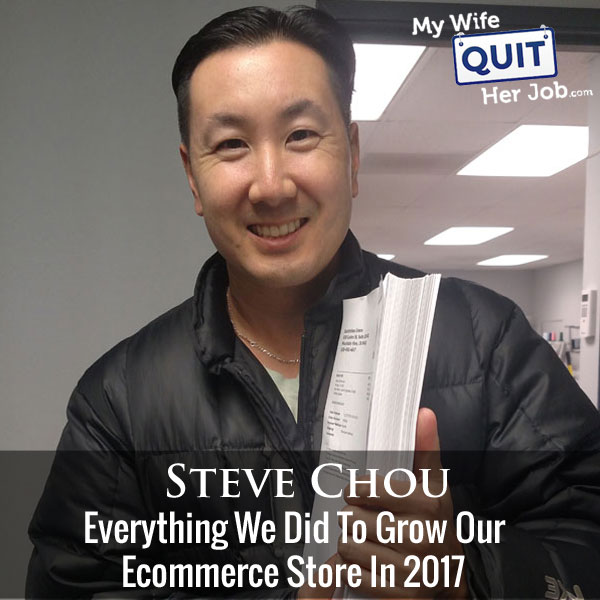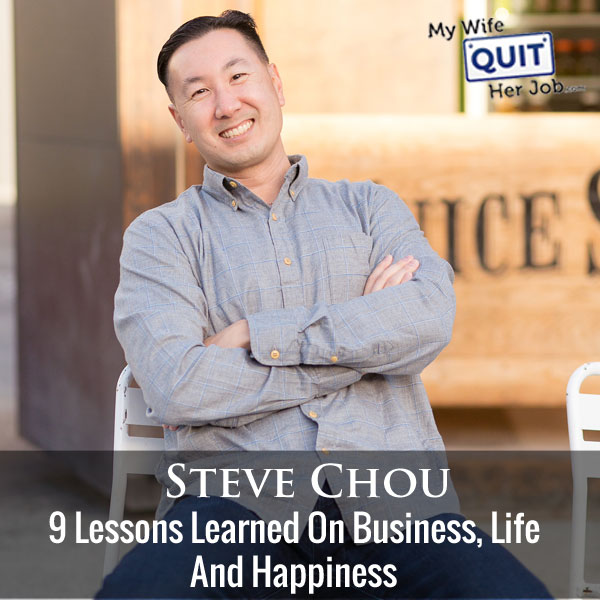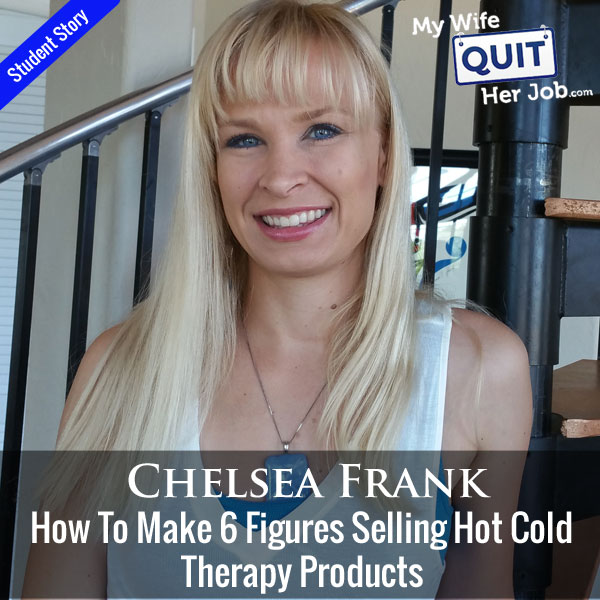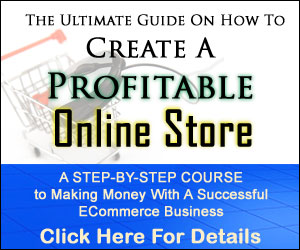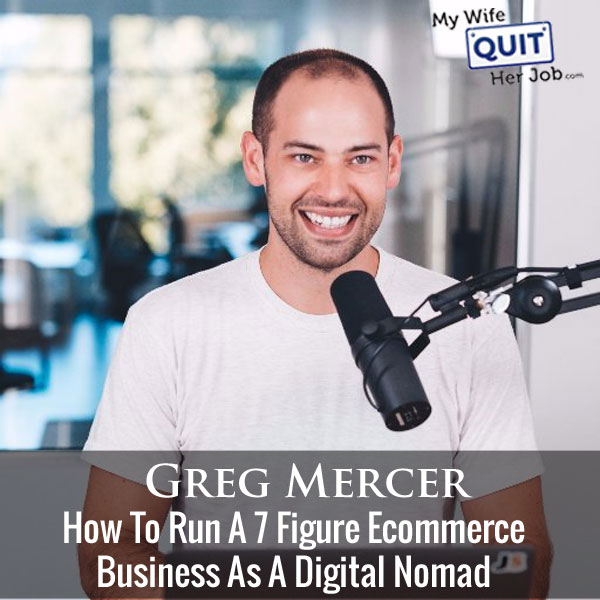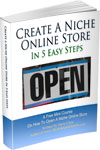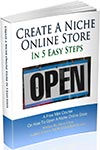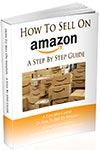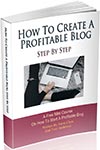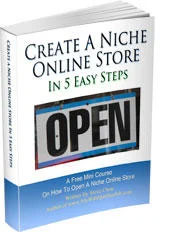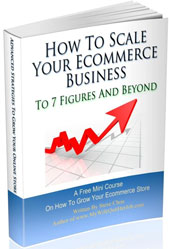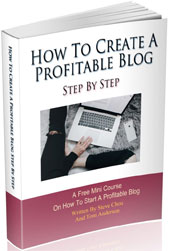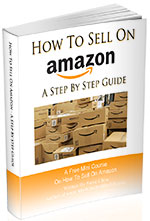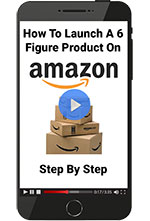Podcast: Download (Duration: 53:56 — 62.0MB)
Today I’m thrilled to have my buddy James Clear on the show. James is someone who I met at a mancation held by Billy Murphy:) Now I’ve known about James for a very long time and he’s one of the most successful writers that I know.
James focuses on uncovering the habits and routines of entrepreneurs, artists, athletes and high powered individuals and shares them in easily digestible and actionable articles.
He’s been featured practically everywhere including CBS, Entrepreneur, Forbes, Time, you name it. His site gets millions of visitors every month and he has an email list of over 400K email subscribers. Enjoy the show!
What You’ll Learn
- How James gained traffic to his site early on when he was a nobody
- The primary factors he attributes to his success
- His secret for getting traffic and ranking in search.
- His philosophy on content
- How his website makes money.
- Why he chose his name to be his domain
Other Resources And Books
Sponsors
Payability.com – A financing company that provides high growth Amazon sellers with daily payments. With Payability, you can say goodbye to cash flow issues and stockouts and hello to scalability and profits. Click here and receive a $200 credit upon signup.
Klaviyo.com – Klaviyo is the email marketing platform that I personally use for my ecommerce store. Created specifically for ecommerce, it is the best email marketing provider that I’ve used to date. Click here and try Klaviyo for FREE.
Privy.com – Privy is my tool of choice when it comes to gathering email subscribers for my ecommerce store. They offer easy to use email capture, exit intent, and website targeting tools that turn more visitors into email subscribers and buyers. With both free and paid versions, Privy fits into any budget. Click here and get 15% OFF towards your account.
SellersSummit.com – The ultimate ecommerce learning conference! Unlike other events that focus on inspirational stories and high level BS, the Sellers Summit is a curriculum based conference where you will leave with practical and actionable strategies specifically for an ecommerce business. Click here and get your ticket now before it sells out.
Transcript
But before we begin, I want to give a quick shout out to Privy who is a sponsor of the show. Privy is the tool that I use to build my email list for both my blog and my online store. Now Privy is an email list growth platform, and they actually manage all my email capture forms. And in fact I use Privy hand in hand with my email marketing provider.
Now, there are a bunch of companies out there that will manage your email capture forms, bit I use Privy because they specialize in e-commerce. Right now I’m using Privy to display a cool wheel of fortune pop-up. Basically a user gives their email for a chance to win valuable prizes in our store. Customers love the gamification aspect of this, and when I implemented this form email sign ups increased by 131%.
So bottom line, Privy allows me to turn visitors into email subscribers, which I then feed to my email provider to close the sale. Head on over to Privy.com/Steve, and try it for free. And if you decide you need some of the more advanced features, use coupon code MWQHJ For 15% off. Once again that’s P-R-I-V-Y.com/Steve.
I also want to give a quick shout out to Klaviyo who is a sponsor of the show. And I’m blessed to have Klaviyo as a sponsor because they are the email marketing provider that I personally use for my ecommerce store, and I depend on them for over 30% of my revenues as of last month. You’re probably wondering why Klaviyo and not another provider. Well, Klaviyo is the only email platform out there that is specifically built for ecommerce.
Klaviyo can track every single customer who has shopped in your store and exactly what they bought. So let’s say I want to send an email to everyone who purchased a red handkerchief in the last week, easy. Let’s say I want to set up a special auto-responder sequence to my customers depending on what they bought, piece of cake, and there is full revenue tracking on every single email.
Klaviyo is the most powerful email platform that I’ve ever used and you could try them for free at mywifequitherjob.com/K-L-A-V-I-Y-O. Once again that’s mywifequitherjob.com/K-L-A-V-I-Y-O, now on to the show.
Intro: Welcome to the My Wife Quit Her Job Podcast. We will teach you how to create a business that suits your lifestyle, so you can spend more time with your family and focus on doing the things that you love. Here is your host, Steve Chou.
Steve: Welcome to the My Wife Quit her Job Podcast. Today I’m thrilled to have my buddy James Clear on the show. Now James is someone who I met at a mancation which was started by Billy Murphy. And I’ve actually known about James for a very long time now, and he’s one of the most successful writers that I know. James focuses on uncovering the habits and routines of entrepreneurs, artists, athletes, and high powered individuals and then shares them in an easily digestible and actionable article.
He’s been featured practically everywhere including CBS, Entrepreneur, Forbes, Time, you name it. His site gets millions of visitors every month and he has an email list of over 400,000 email subscribers. And with that welcome to the show James, how are you doing today man?
James: Hey Steve, doing great man, thanks so much for having me.
Steve: James, we got a chance to hang out for an entire weekend. But I actually don’t really know like how you got started. So I know you are a photographer, a weightlifter, as well as a writer, but how did Jamesclear.com get started, and how do you juggle like all three things?
James: Yeah sure. So I wondered about habits long before I started writing about them. So we all have habits, but I kind of cut my teeth with the idea as an athlete. So I played baseball way through college. My dad played professional baseball for St. Louis Cardinals in the minor league. So I kind of grew up wanting to follow on his footsteps as well, so athletics was a really big part of my life growing up. But I was also a huge science nerd, so I loved — I was a biomechanics major undergrad, so basically in chemistry and physics classes.
And so I kind of had like two halves of my life where I was just like did well in school and I was this nerdy kid on one side, and then I also was an athlete who really loved sports and athletics on the other side, and so like kind of like merger of a body and mind. I had all these mental habits, these study habits from school, and then I also had weightlifting habits, and strength training habits and practice habits on the field.
And I had a really serious injury when I was in high school. I got hit in the face with a baseball bat, and I ended up getting air carried to the hospital and put into a coma for overnights and had a bunch of seizures. I couldn’t drive for like nine months, and it was this really long road to get back, but then slowly over the course of the next few years, started to work my way back.
And the way that I did it, I didn’t notice at the time, but the way that I did it was by doing one small habit at a time. I started to make one little change here and then I’d like leverage that to build a little bit of momentum, and then I get my feet underneath me. And so they were — when I started this process, I just focused on little things like going to bed at the same time each night, or making sure I carved out an hour to study every day, going to physical therapy sessions consistently.
And so it was rude basic stuff, but I was able to leverage that idea of like one tiny habit leading to the next. And eventually five years later, I ended up becoming an academic All-American as a baseball player, and then shortly thereafter launched my business after I finished undergrad graduate school. And so that idea…
Steve: Your business being Jamesclear.com?
James: So that was not the first one I started. So the very first website that I started — well the very first thing I did that was not fair was starting an iPhone app which promptly went buzz. I thought like, oh if I just build it then people will come and check it out. And I think I spent $1,500 on the development of that and it made like $17 or something like that. I think it was like $19.17 So it did not do well, and I lost 1,500 bucks out of that which was a ton of money because like for me at the time I didn’t have much, and I wasn’t making any money for business.
So I learned that lesson pretty quickly that like, oh the reason this didn’t sell is because I had nobody to market it to. And so I had to start focusing on that, and that led me to reading back consumer psychology and like why would someone buy something, why would someone sign up for email list. And that little dive into consumer psychology led me to behavioral psychology, and then down the rabbit hole of like habits and behavior change. And that’s all the stuff that I write about now.
So the answer to your question is that it came out of this. My interest and habits and the launch of Jamesclear.com, which happened November 12th, 2012, came out of these two areas, the first area being my like personal experience with habits as an athlete and as a student. And then the second area being my failure as an entrepreneur at the start and having to learn about consumer psychology which sort of led me to the literature and the research on the topics of habits and behavior change.
Steve: Okay and in terms of photography, is that just something you do on the side, or are you a professional photographer as well?
James: Yeah, so I don’t do professional photography in the sense of like shooting for clients. I [inaudible 00:07:41] friends, but I’ve done travel photography in over 25 countries now, in 26. So I mostly focus on landscapes and street photography. And it started because I lived in Scotland briefly, and I thought, oh I should get a nice camera over there. And so I got it, and it was the first camera I’d ever had, and I took over 100,000 photos in the next year. So I just got like totally obsessed. And I don’t even know that I would like it, but I really love the visual and creative outlet that it provides.
So now I try to focus on going to three or four new places a year just with the express purpose of creating photos and stuff.
Steve: So in terms of just like your income, it comes primarily from JamesClear.com, right?
James: Yeah, like 98% of it is from there. I’ve tried; I don’t try very much to monetize the photography side of things.
Steve: Okay. Now I was just looking at your site, I looked at it last night and it gets an insane amount of traffic. And I was just curious like when you got started back you said in 2012, right, how did you gain traffic to the site early on basically when you were a nobody?
James: Yeah, it’s a good question and I think there are two kind of main points I want to make as far as share the specifics about where traffic comes from now. So the first point is when I started, like many of us, I read all these articles and tried to figure out like where people get traffic, and I was at work. And I remember reading this list of like 50 ways to drive traffic to your website. And I would in the next like three months; I did all 50 and like none of them really moved the needle.
And I was so frustrated because I was like what, all these people were writing about this, just like not doing it right, what’s going on? And I think that there is a very large contextual component to any business or website on where traffic comes from. So for example Instagram drives very little traffic for me, but I have a friend who is a hand lettering artist and creates illustrations and Instagram is where like basically all of her sales come from.
And so the question that you should ask is not necessarily where do I get traffic from or where do like top people get traffic from, but like where is the right place to get it for me in my business. So that’s one caveat. And then the second thing is there are very few traffic sources online that last for the long run. So a lot of — the internet moves fast, it’s moving much faster now, and so a lot of traffic sources are kind of transience. And so like Quora is a good example.
There was a like a year and a half, maybe a year to two year period where I got a ton of traffic from Quora and that’s basically gone now. And so that mostly has to do with how they changed their platform, we can talk more about that if you want. But my point being that Facebook and Google are — really Google was like the kingpin that has lasted for like a decade now.
Facebook seems to be or have a little bit more staying power than a lot of the options, but yeah things change fast. I mean social media wasn’t around ten years ago. Now there are entire websites that get 90% of their traffic from social. So it can kind of add the flow. To answer your question where traffic comes from for me right now, like 80 to 90% of it is from three sources, Google, Facebook, and Pocket.
And then in the beginning you’re not going to get much traffic from Google because your site hasn’t been around, it doesn’t have much content, and usually SEO takes a few months at least for you to start ranking for term. So what I focused on was writing two articles a week, and then I started pitching those articles to other outlets to republish and syndicate it to their audience, and then offer a by line to these. A lot of my traffic in the beginning was through partnerships that I built.
Steve: Let’s talk about that. So how do you get these partnerships when you have not that much content, or did you wait until you had critical mass before you started reaching out?
James: No I think the first article that I pitched was the second one that I wrote on the site. So I didn’t really have much on the site at all when I started. So just as a brief precursor to this, when I started Jamesclear.com, I had started websites before that. So like although I started it from scratch, I always knew what to focus on, like I knew to make the email list the most important thing.
And I knew at least I had like a little bit of a sense of what my voice was, and how to write an article. And I feel like that’s important to mention because if you started out — like there’s a period probably six months at least where you’re just trying to figure the basics out. And I had already gone through that so I was able to kind of like hit the ground running when I launched Jamesclear.com.
Steve: Can you walk me through like that first pitch on your second article. How did you find the person to pitch, how did shoot into the outreach and how did everything kind of come into play?
James: Yeah so I wrote the full article, published it on my site…
Steve: What was it about first of all?
James: That one was about diet habits. It was specifically about how to change your environment to make it easier to lose weight and [inaudible 00:12:51]. So like optimizing the things in your kitchen and the size of your plates or things like that. And so I still do that today, I still write everything on my site first. And then after it ran on my site for about a week, I reached out to — the outlet that ended up running that one was Lifehacker.
And so it doesn’t work this way all the time, but Lifehacker has an actual tips line. So I think it’s like tips@Lifehacker.com or something, but you can – they are actually actively looking for articles to run. Other places like CNN or Time or Men’s Health, or — and I’m just naming ones, but not everybody is looking for it. So in most cases you may have to find an editor who’s the editor of the relevant vertical for you.
So if it’s an article about finance, you’d want the finance editor, or if it’s about lifting weights then you want the health editor. And then you either need to contact them cold which I’ve done before, or it can also be a good strategy if you’re willing to play the long game, find another author who writes for that section already, and then get to know them, talk to them a few times on Skype or whatever and then like three months later have them intro you to the editor of the vertical so that you kind of a warm intro.
But for this first one, I wrote the article, I sent to Lifehacker and I almost always keep it very short in the first email. The only goal of the first email is just to get a reply. You don’t have to like you don’t have to include everything like don’t tell them your byline; you want it to be — don’t ask for specific links to be added but all that stuff can come later.
Instead I usually just say something like, hi, I’ve seen that you’ve written these articles on A, B and C like a link to other previous articles that they’ve written that are about the same topic. So in Lifehacker’s case, like I have seen you’ve written about weight loss habits here, here and here. I recently published an article on whatever the topic is, and it performed really well on my site. If you – I’d love to see it run on Lifehacker, if you’d like, you can check it out here. And then I always link to the version on my site so they know it’s already published, they’re reading my copy.
And then and I just say like go check it out and if you enjoy it let me know, I’d love to have it run. Yeah so they got back to me and said they wanted to run it. And then I said, okay, what’s included, keep all links in and give me a byline and this is what I want to say and blah, blah, blah. And so that was just like the…
Steve: Was that a cold outreach to Lifehacker that first time?
James: Yeah it was the first time. I mean now you know I now…
Steve: Right, now you’re in context probably.
James: But yeah the first time it was, and it was cold for almost all the places that I’ve run. You have to remember that the people who are running these verticals, these editors all have bosses. And the bosses are like, we need 125 articles this week and they all need to be good. And so if you can kind of tap them on the shoulder and give them something that’s great, then you make their life easier.
So I think the big threshold is not — everybody focuses on the email like what does the email say, but that’s not the threshold across. The threshold across is writing something great, because if you write something great then they’ll want it. So the email could be really simple, but the hard part is writing a great article not writing a great email.
Steve: Can we talk about that post real quick. Was it like a super comprehensive post that was like 10,000 words or?
James: No, that one was fairly short. Most of my articles, I do have some that are pretty long. I have some that are like 6,000 words or so. And those do well although I don’t try to pitch those as often to outlets. Most of my articles that I pitch to outlets are like 1,500 to 2,000 words. So still and people can see this if they want to check out some articles and see what the examples look like. But my writing style, I usually write about 4,000 words, and then I revise things like 20 times and it turns out to be like 1,700 or 2,000.
So my point is like I try to have very high signal and low noise. So even though it’s only 1,700 words, there’s like a lot of depth in there. And so I think that it doesn’t necessarily have to be super long for it to be comprehensive or compelling or thought provoking, but it might take you more time to stay classic. If I had more time I would have written a shorter letter, it’s that kind of flow.
Steve: So when you come up with topics, do you always have some sort of publication in mind meaning that do you ever just write for just the heck of it?
James: Yeah, actually I pretty much always just write for the heck of it. I almost never have an outlet mind. I don’t think I’ve — sometimes I’ve written an article with SEO in mind, but I’ve never written an article with like, oh I’d like the story on like Lifehacker, or I’d like the story on something.
And the reason I say that is because these places that run articles, I mean they have a huge breadth of things that they’re interested in running, like it’s not that necessary to try to tailor it as long as you’re writing about — for me at least as long as I’m writing about productivity or creativity or improvement or any of the topics the health habits, any of the things that I’m generally interested in, they all have big verticals that cover that stuff so it’s probably a good fit.
Steve: Okay and how do you find a list of sites that are actually willing to syndicate your stuff, because I know for a fact like if someone came up to me and said, hey I already wrote this article, do you want to syndicate it on your site, I would say no, right?
James: Yeah it’s funny. I get – you probably get tons of emails like that. so it’s hilarious I’ve never run a guest post on my site, but every week I get someone saying, I’d like to offer this guest post. I’m like I don’t — literally if you just look at the site, there are no guest posts on it, so I don’t know. So to answer your question, I’ve actually never seen a list of those sites somewhere. I just did it by searching myself. One of the things that really helped me grow early on and I think was fairly unique in my approach, as far as I know I was one of the first individuals to do this.
A lot of these big sites like let’s take Time for example, so Time was already syndicating articles from Shape Magazine or Men’s Health or something like that, I’m just giving these as examples. And so I went to them and said, look, you already have a partnership with this other media company and you’re running their articles on your site, like just treat me like you would treat Men’s Health.
And no other individual blogger was doing that at the time, and so I got distribution in these like really large outlets and that helped, that really helped push things because suddenly instead of trying to do a guest post on a site that had like 200,000 visitors a month, I was on Time and they’ve got five million or ten million visitors a month or whatever. And so the web of exposure was much, much higher by working with a major media company rather than like an individual blogger who would syndicate or something like that.
Steve: So to find the contacts, it’s just a matter of going through and finding out who the editor is and then reaching out to them directly?
James: Yeah, I think that process that I laid out before, I mean there’s probably other ways to do it, but at least that was the way I did it. I just would — a lot of these sites they’ll have what’s called a masthead or banner, and it lists all the editors for the different verticals. And so I would just try to find the relevant person and reach out to them via email. I never did it preemptively or just like, oh let me just build the relationship. I always waited until I felt like I had a really great article to send.
Maybe that’s another insight. So rather than moving fast and sending them the first thing you have, I would make sure you have something that’s really good, like especially for that first article you send over, I would always make sure that it performed well with my audience. And I knew that if it did well, then — like at the time I was writing two articles a week. So that was eight or nine a month, but I would only pitch like the two or three that were the best ones.
So I knew that if it was in my top 25% in a month, then it must be at least okay, and then I’d start with that rather than just pitching like everyone that I wrote.
Steve: I mean the way you are putting all this makes it sound very easy. So I’m just curious what your hit rate is.
James: Yeah, people have asked that before and I’ve never sat down and actually calculated it. But I would say that it’s at least 25%.
Steve: Wow okay.
James: So you need to be willing to spend some emails and getting a response. Maybe three out of four you end up not hitting, and I don’t know maybe I’m just lucky or maybe the topic that I write about lends itself well to that. Maybe if you wrote about I don’t know like something I don’t write about entrepreneurship for example, then maybe it would work as well, I’m not sure. But at least for my experience that’s kind of how it’s worked out.
Steve: Okay and then just from the publication standpoint, what is their rationale for syndicating an item? Like wouldn’t most publications want to be like the only source for that particular topic or article I should say?
James: Yeah it’s a pretty much all publications want that, and some of them still demand it, like I don’t think the New York Times for example is going to be syndicating anything or the Atlantic, places like that. But the rationale was just kind of what I laid out earlier where like they have certain number of articles they got to publish every week and if you can tap them on the shoulder and give them one that’s great then you make their life easier.
So I think the rationale is creating good content is hard enough, finding good content is also difficult. And if you can make that process easy on them where you can just — now for example I might get paid for some of the ones that get indicated, but for many years and still today in plenty of cases all syndicate for free, like I’m not asking for anything.
It’s just free content on their end and it’s a great deal for them advertising wise because most of these big sites have advertisers so that they get another page that they can rank and earn advertising revenue on without having to pay anybody to create content. But on my end I get a lot of email subscribers from it, so it’s worth it for me too.
Steve: I just want to take a moment to thank Payability for being a sponsor of the show. If you run a successful e-commerce business like I do, you probably know that the worst thing that can happen to you is to run out of stock. Now my wife and I regularly import container loads of merchandise from China, and having the cash flow to do so is very important.
Right now Amazon pays you every couple of weeks, but imagine what you could do if you got paid on a daily basis. My friends over at Payability make that possible for thousands of Amazon sellers. Right now high growth Amazon sellers are using the extra cash flow from Payability to buy more inventory, stay in the buy box, and keep up with demand.
Here’s how it works. Every single business day, Payability gives sellers 80% of their Amazon earnings from the prior day for an initial 2% flat fee on gross sales. The remaining 20% is reserved to cover returns and charge backs, and is released to you on Amazon’s regular 14 day schedule. Over time as you stay on their platform, Payability will increase your advance rate up to 90% as well as reduce their fees to only 1%. Your money isn’t doing anything for you if it’s sitting at Amazon, so why not get it faster.
Sign up now and put your earnings to work today. Go to Go.payability.com/Steve to get started, and receive a $200 credit on sign up. Once again that’s Go.payability.com/Steve to get a free $200 credit upon sign up. Now back to the show.
So James I actually ran an SEO report on your site before this interview, you rank number two for intermittent fasting, number one for values, one for good books, three for motivation, one for articles, most of these keywords have search volumes in like the tens of thousands. So did you have any particular strategy for ranking for these terms, do you do anything special about SEO?
James: Well I don’t know if I do anything special. The first thing is most of the time; I mentioned this earlier, most the time I just write stuff to try to write good stuff. I don’t necessarily think about SEO until after the fact. So like for example take motivation, you mentioned that one, so I think if you search motivation will be right near the top. And I had an article I wrote about motivation called the Goldilocks Rules just about kind achieving like a perfect dose of motivation or peak motivation.
And I didn’t think about what that — I didn’t even think about what that article was about before I wrote it. I just wrote the — I just had the idea and I didn’t think about the keyword term or phrase or anything. But after I finished, I asked myself, okay what is this article about, right? Of course it was something similar to search. And then I realized, oh it’s about how to stay motivated, so that is a good keyword for it. So we optimized the post for how to stay motivated after it was published.
And so there are a bunch of little on site things. I mean this is all basic stuff so it may be reviewed to some of your listeners, but like optimizing the title, so how to stay motivated in the title of the post. Have it in throughout the post itself, so in the body, copy and having some stuff like that. You can if you want to put it in the URL things like that. So all this is just basic on page optimization.
And then because I also have a fair like a fairly sizeable list and social following, again this is not to do with SEO, I would do this anyway, but I want to share it to my email list, I share it on Facebook and Twitter. That drives additional juice so to speak back to the page, more people share it and like it. I think the social signals probably help us a little bit. That ends up leading to people linking to it, but I don’t actually do any link building or anything like that.
Steve: Okay that was my next question yeah okay.
James: Yeah I do — the Only SEO optimization I do is internal. I don’t do any external stuff on like other sites or link building or stuff like that. It’s just, do whatever I can optimize on the page and then I move on to writing the next article.
Steve: So I guess the syndication mainly is your link building, right?
James: Yeah, it’s funny. I guess that does help. I had never thought of it that way. I thought about it just to get traffic and drive email subscribers because so what we’re talking about traffic sources, it’s great to get a lot of traffic from SEO, but SEO doesn’t convert as well as partnership although traffic does for email list scrubbers. So I was doing the partnership stuff because it was a higher conversion rate for emails, but it probably does help for SEO as well.
Steve: Can we talk about these partnerships, what do you mean exactly?
James: Yeah, so I just meant the syndication stuff.
Steve: Oh okay got it, got it.
James: Yeah, all the stuff that we just talked about.
Steve: Because they do link to you right, once you syndicate they link back to your original article, right?
James: Yes, so I always ask them to link back to the original, and I also ask for a link to my newsletter page which is just like my basic thought there is someone just spent five minutes reading your article on Time or Forbes or wherever, and they get to the bottom and then you don’t need like I don’t need to just send them to Jamesclear.com. They could go and browse, but like they already know that they like the content, otherwise they would have stopped reading the article half way through.
So at that point I just ask them to go straight to the email newsletter and sign up. So I have them link to — if you will feel like locking me out of it it’s changed to a .com/newsletter. And so, that landing page has kind of lured some people to have them sign up.
Steve: Okay, I mean you have this email list of several hundred thousand subscribers. Are there any specific strategies that you can share on how to kind of optimize these sign ups? I mean you just mentioned one, but are there any others?
James: Yeah so I thought a lot about — for the first couple of years I thought a lot about email conversion. I’ve thought much less about it over the last year or two as I’ve been writing my book and kind of focusing on that. But I think some of the basic principles still apply. I’m sure some things have changed over the last year or two. I don’t feel like I’m super fresh on whatever the hottest latest thing is, but I think the core ideas are still really valuable.
So the first is make it easy. To many people it’s so hard to find where to sign up. So like if you go to my site, you’ll see that there’s a newsletter link right in the navigation bar, so just it’s free newsletter, it’s right there. For a long time, underneath the title of every article I would have the title, then I’d say by James Clear, and then I would have like a little dash or separator and then I would say like click here to get free updates of new posts. And if you clicked that, then a little mobile came up and you could sign up to the email list right at the top of every article.
So both of those are above the fold. And this is why and I guess also for listeners who don’t know that term, above the fold just means that you don’t have to scroll to see it, it’s like on the window when the screen first loads. And so those are two links that were above the fold there. This is one of the reasons why pop ups tend to convert really well because it’s like right there in front of people. It just makes it easy and obvious.
But the second my little heuristic that I use when thinking about web design and conversion is I try to ask myself what is the person looking to do when they get to the page, and then at what points on the page are they looking for the next thing to do? So let’s walk through both of those. So the first one, let’s say that someone comes across the link to an article on Twitter or Facebook and they click on that link, and then they arrive at my site.
Well, what is that person looking to do based on their previous action? They’re looking to read the article; they’re not looking to see the side bar add an ad pop up or pop up or anything like that. They just want to dive in. And so we have some of our sliding forms or pop up forms or exit intense stuff or whatever set to only show on the second page not on the first so that we can make it as easy as possible for people to fall in love with the content and do what they intended to do which leads to a better user experience in my opinion when they first show up.
And then after that, they click on another link or want to dive deeper into the page, then we’ll show them something once they’ve expressed a little bit more interest. The second thing, the second part of the question I mentioned is at what point on the page are they looking to do something new? And so a lot of people will have, in my opinion they’ll have calls to action in somewhat strange places where people aren’t necessarily looking to do something next. But there are a few points in the page where people are naturally like one action has ended and the next one is now ready to happen.
So for a long time the end of an article is like a great place or the footer of a website. We don’t have it there right now because we’re testing some other things, but for a while when I inserted a form in the footer, it was like an extra 500 subscribers a month. And I was like where did those people come from, like what were they doing beforehand? They were just getting to the bottom of the page and there was leaving or is closing it. But just by giving them the option to do something next, making it clear what to do next, you increase the number of people signing up.
So I think I try to think about it through the lens of user experience and then putting calls to action at appropriate points or locations on the page based on what the user wants to do, or when they’re looking for something to do next.
Steve: What is your most successful sign up form on your site?
James: I don’t know what form it is right now, but I can tell you what the copy is. So we tested a bunch of different titles and subtitles, offers, all type of stuff. My assumption going in was that it was going to be some kind of freebie like download this guide to double your productivity or something like that, right? But in fact that was not what won. We tested a bunch of like free download options and stuff. The one that did best was like some something like join a newsletter here or whatever and then the title was get self-improvement tips based on proven scientific research.
And it wasn’t an offer at all, but it was just – it wasn’t a free download but it was a description of the content that was compelling enough that people wanted to sign up. And I was super happy that that ended up being the one that won on the split test because that’s actually what I would prefer. I would prefer people to sign up for the content they’re going to get long term, not sign up for like some free download then check out. So yeah, that’s what we ended up…
Steve; It’s interesting because I was just like looking at your site and free newsletter, like if I didn’t know you it just doesn’t sound that appealing, right? I’m just curious how many people actually click on that button, and then you offer two free books it seems on that particular sign up form?
James: Yeah, so this gets kind of to my larger strategy for site design which is if you go across the different tabs on the navigation, you’ll find that like the first two or three, they are different paths that all end up leading to the same destination. So for example if you go to the home page, they will have some kind of opt-in form on there, but then there’s also a link to the about page there.
And if you go to the about page, there’s like a form, a map page. If you click on the second tab and that’s the articles tab, and for a long time — I think we’re testing something different right now, but for a long time I would have a free opt-in form, like an opt-in form at the top of the article’s tab so that’s the second one in navigation. So you think that you’re choosing something different, you think that you’re choosing to go to the articles and might browse what’s there, and the archive is there so you can find accounts that you like.
But you’re also still giving them options to sign up. And then the third one is the books tab which has like two free downloads on the eBooks on there. So again, if you click on either of those eBooks, then that will take you to the landing page. So it’s kind of like you get to choose your own path, but there are options to get on email list regardless of where you go.
Steve: Do you run your email list where you send the same article out to everybody, or do you have it really segmented?
James: We do both. So on Mondays we send out new articles and the new article goes to everyone, and then on Thursdays we have kind of this like perpetual evergreen newsletter that we’ll only send you articles that you haven’t read yet from the archive.
Steve: Okay, how do you determine what they haven’t read yet?
James: Either, you were sent an article via email but you didn’t open or click on it, you have never visited that page, or you haven’t clicked on a link to that page. And so if all three of those are negative, then you get sent the article because you probably haven’t seen it before.
Steve: Okay interesting. What email provider do you use?
James: We use Drip.
Steve: Okay, yeah I recently switched over to Drip as well.
James: Yeah I really enjoy it. It took a while to get. I didn’t have to do this, but it took a while to get all the things set up like all the work flows and tagging and all type of stuff. But now that it is set up, it’s great to know what people see and what they open and so on.
Steve: So how does JamesClear.com generate revenue, like what are your primary products that you sell?
James: So we have a couple of different avenues. So the first one is courses and that’s also the bulk of the revenue. So we have one course called habits academy, so it’s kind of like I sat down and thought, what would it look like if a top tier university created a course on how to build better habits. They always create courses on biology and history and economics. But what if we did a college course on what habit formation looks like, and how to apply in a practical way.
So that was the goal was to create something that I felt like I could teach at an institution if necessary. And I think we’ve done a good job of it. We’re actually going to be shooting a second version of it soon, but we’ve had thousands of students go through. And that has about 50 lessons in it, so that course is our online course. And then we also have — so I have a book deal and so I’ve talked to you previously about that. It’s still with the publisher, we’re going through edits right now, and so hopefully that will come out in 2018.
And then we have speaking. So I usually do now about six to ten key speaking gigs a year. I don’t really want to do much more than that.
Steve: That’s pretty often actually if you think about it, yeah.
Steve: Yeah like once every two months is probably my ideal pace. So I think this year will probably end up right around that amount and then we’ll see. So we’re going through courses plus speaking. Right now actually this is a brand new one, we’re testing ads on the site for this quarter. So I don’t have…
Steve: That’s interesting.
James: I don’t have data or insight on what that will be like, but it’s kind of an interesting test on something new. I have been and I’ve been on the record as being very anti ads for years now. So I will just say for a long time, but I finally said like, I’m really big on testing my assumptions and trying to be open minded. And so I was like, well, you should probably like take some of your own medicine and actually try it, and see what the data is like.
Steve: I was actually shocked because I was on your site last night and I saw an ad at the bottom of the browser. I was shocked to see it actually.
Steve: Yeah, you were like the fifth person that saw the ad. So I guess that’s good because people feel like I wouldn’t do that kind of thing, I don’t know. It’s interesting, I feel very conflicted about it because I don’t really want them on there, but I did want to like at least make a decision based on data.
Steve: Yeah the reason why I ask is like you do a really good job of keeping people on your site, and it just seems odd that you’d want to drive them away for a click, I don’t know.
James: Yeah so it’s not based on clicks, we get paid based on impressions although of course some people click it. But yeah that is a good point. Early data has shown that our bounce rate has actually gone down which is so weird to me, and also there was no impact on conversions for the course which is the other thing I was worried about. We don’t run ads on any landing pages or sales pages, so like it shouldn’t influence that, but I just didn’t know if like there will be some long term impact of impacting the flow or whatever.
Yeah so we’re testing that. And then we also do affiliate stuff. So I don’t do — I made a decision when I started the site that I wasn’t going to do any affiliate deals for like online courses or anything like that. So the only thing that I do from an affiliate stand point is if I write an article and I cite a book, then I’ll link to like the affiliate link on Amazon. Which is not a ton, but the site gets a couple of million views a month, so they can add up based on the volume. So those are the main revenue sources.
Steve: One thing I did want to ask you and I noticed I don’t see very many photos on your site. So Pinterest probably isn’t a traffic source for you. I’m just curious what your rationale is for just pure text and not more graphics.
James: I don’t know that I have like great rationale for it. I think as a photographer I really dislike stock photos and like anything that doesn’t look really good. And then I also, for a while I was running like photo essays and some of my own work on the site, and so I like didn’t really want to include outside images, because I didn’t want people to be confused thinking like I had taken a photo, maybe I was just using it as like the header photo for that post or something.
Steve: Interesting, okay.
James: So there’s a little bit of that. And then about a year and a half ago or two years ago I started doing these hand drawn images and illustrations for some articles. And those have gone over really well and people seem to like them. They also sort of you know sometimes I’ll draw a graph, sort of sometimes I’ll draw like a Venn diagram or some kind of other like shape that represents like a certain idea.
And I really like those when I have the time to draw them because a lot of the time the visual ends up clarifying the main idea of the post. So I’ll have some readers who will email me and say like once I saw the graphic, then I really like got the idea. And so I try to think long term. I think I’ll do more of those for articles. So it’ll be like my own images in the gallery and available for as prints and then on articles it will probably either not have an image or be a hand drawn like illustration for me but will help clarify the idea.
Steve: Okay, yeah I was just really curious because you’re a photographer and at the same time there’s no images really in a lot of your posts. Okay so last question here, I kind of wanted to — so there’s a lot of people out there who want to blog or they want to start writing and basically get their ideas out there. And I was just curious and I want you to set the right expectations for them. How long did it actually take for your blog to gain traction, and what are some of the proper expectations in regards to traffic and monetization?
James: Yeah. So I think I mentioned earlier that I when I started JamesClear.com I had already built a website before that, and on that website I went from zero to I think about 20,000 subscribers and that took me about a year and a half. And I mention that period because I look back to that period now as like the period where I incubated my skill set. So I needed but it took me a year and a half to learn all the like basic stuff like how does a website work? How do you set up WordPress?
I taught myself how to code. I taught myself how to build an e-mail list and launch a product, and like find my voice as a writer. So it took me a year and a half just to get the basics down. Then once I had that, then I launched JamesClear.com. Now I’ve been very fortunate and honestly some of this I don’t even know if it’s really in my control or like even if I could replicate it if I tried to do it again. But JamesClear.com has grown very fast.
So the first month I think I had about 100 subscribers, three months in, I had 1,000, six months in, I was at 6,000. And then the seventh month, I went from six to twelve, so I added six in that seventh month. And it really never slowed down from there. So after the first year, they were 34,000 subscribers. After year two, I had over one hundred. After year three, I had like 250 and now it’s over like 400.
Steve: Just for the listeners, this is not normal.
James: Right, that’s what I mean. I am very lucky, I’m not sure like what the — I don’t know if I could even replicate it if I did it again. But it’s just like it struck at the right time and I just kept writing. And so I would say as far as trying to set expectations, the first thing is rather than trying to predict your success I think you should just try to control what you can control. I’m thinking about this a lot for the next stage for me. So I know I have this book coming out next year, and I would love the book to do well, but the truth is I don’t have control over how well the book does or how many people buy the book.
The only things that I can control are one, writing a great book and two, trying to put as much effort as I can into getting out there. So that means like the number of podcasts that I get on, the number of articles that I write, the number of interviews that I do. I can control that stuff. So I’ll focus on that and then however the book does is how it does. And I think you can apply that same logic to building a blog or a website.
So for me for the first two and a half to three years, I wrote a new article every Monday and Thursday, that was what I can control. And I knew that if I wrote eight or nine a month, then two or three of them will be decent, and if two or three were decent, then every marketing strategy was easier. And so I just focused on that. This is another thing for setting expectations.
So for the first year and a half, I didn’t make any revenue from the site, I just focused on growth. And then I launched the course and started doing affiliate stuff, and started speaking and all that type of stuff after I had the audience. There’s no reason you have to do it that way.
There are other people like Nathan Berry for example did the complete opposite way where he wrote an e-book first, started a product and then launched the site. So there are many ways to get to a successful business, but as far as expectations go and how my growth went, that’s kind of how it went out for me.
Steve: You did mention luck in your last statement. What percentage would you say was luck versus just you writing?
James: Well, this is an interesting topic that we all like we probably really want to dive into and probably spend a whole hour on that because if you think about it, it depends on how you want to define luck. So I’ll define it two ways. So the first way is how much of your life, success, business and so on was luck? Well if we’re looking at the whole view, honestly it might be like 98%.
I mean it’s an insane amount, like I was lucky to be born at this time in history. I was lucky to be born in America. I was lucky to be born into a family that could afford to send me into school and get an education. I was lucky to be born with a particular set of genes that make me intelligent enough to figure out problems and be interested and curious about this type of stuff. You go down the list, you can see how once you start to stack all that stuff up, it becomes a very, very large portion of things or luck.
They are probably a thousand, maybe a million, I don’t know. There are tons of people who are way smarter than me that are living in a slum in India or Bangladesh or somewhere else that just don’t have the opportunity. So there was a massive factor of luck there, so that’s the first way to define it. The second way to find it is, okay, that’s true but there were also millions of people who were born in America and born into a family who got them educated and they are born at this time in history.
So what’s actually the amount of luck that separates you from your peers who are like you? How come I ended up doing this rather than all the other kids I went to high school with, all the other kids I went to college with? And so for that amount I think luck probably plays less of a whole. I had a couple — I always — I mentioned at the beginning of this that I had this kind of like duo background where I was an athlete but also a big nerd.
And so I had some friends who were even more nerdy than I was that like we started a robotics club when we were in fifth grade, or I had another buddy who duo computers when we were in eighth grade and so I learned a lot about technology from them. So I guess I was lucky to be exposed to a few things there. But the truth of the matter is I also just spent a lot of time working and writing.
And so I don’t really know that you can cheat that process, and that part of it is not luck. I would say that that’s also the part that is more worth focusing on. All the things that are luck, you can’t really change those so you might as well just pour your energy into what you can control. And you can control how much you research on an article, how long you work on each article. Every article I write probably has at least 20 hours put into it, maybe more depending on the length of it. You can control how often you publish.
So focus on that stuff and what you find is that even if you weren’t the luckiest, even if you weren’t born with like the perfect set of genes, or didn’t happen to grow up in the right culture, you still can make incredible headway if you just focus on practicing and consistency, and showing up. And so I think that’s like where it’s probably most worthwhile to focus your energy and effort.
Steve: Here’s my quick take, like all the luck that has been involved in my business have revolved around people. And so as a result of that, I try to meet as many people as possible to improve my luck these days. So that’s why I run my podcast actually.
James: Yeah, I think that’s a fantastic point. What’s interesting is that when I started, so I didn’t have any entrepreneurs in my family, and I didn’t really have, I just didn’t really have anybody to look to in that sense. I didn’t even know what growing a business looks, but I knew one guy who was a DJ, but he just did it on the side. That was the only entrepreneur that I was close with.
And so at the time I had no peers who were — when I was starting making six figures from my online service, it was like really a big deal. It’s still a big deal now so I’m not trying to belittle it, but my point is that today there are way more people who are making like seven figures from their online companies and stuff. And I didn’t know any of those people at the start.
So for the first three months, I just emailed — I think I emailed like 300 people, 100 to 300 who already had successful businesses similar to what I was hoping to do, who already had successful blog and website online. And most of them did not come back to me. So you talked about hit ratio earlier with the emails to publishers. My hit ratio for those emails was very low, but I did have like 20 or 30 people who got back and we talked on Skype, and I got to know them.
So by the time I was like three or four months in, I at least had a couple of dozen people that I could send an email to and they would reply that were doing what I wanted to do. And I think looking back now, having that social network was critical. And now as you know what you said, you just try to keep meeting new people and expand that because having those relationships and those connections is a huge, huge part of achieving some kind of success online, because entrepreneurship can be a lonely journey. And a lot of that not only helps you sustain it, but also provides some of the luck and opportunity that you reference.
Steve: Absolutely. Hey James, I want to be respectful of your time, we’ve been chatting for almost 50 minutes. We will definitely have you back when your book comes out, and we will go through a more in-depth discussion on habits and motivation. But until then where can people find you online?
James: Awesome yeah thanks so much for having me. If people would like to get more, you can check out JamesClear.com and if you just click on articles, we’ve got things divided up by category and so on, so you can dive into whatever interests you.
Steve: Yeah, it sounds good. James, thanks a lot to come on the show, really appreciate it.
Hope you enjoyed that episode. James is an incredibly talented writer, but it takes more than just good writing to get ahead. You have to get your work in front of enough people and syndication is a great way to do it. For more information about this episode, go to mywifequitherjob.com/episode203.
And once again I want to thank Klaviyo for sponsoring this episode. Klaviyo is my email marketing platform of choice for ecommerce merchants, and you can easily put together automated flows like an abandoned cart sequence, a post purchase flow, a win back campaign, basically all these sequences that will make you money on auto pilot. So head on over to mywifequitherjob.com/K-L-A-V-I-Y-O, once again that’s mywifequitherjob.com/K-L-A-V-I-Y-O.
I also want to thank Privy for sponsoring this episode. Privy is the email capture provider that I personally use to turn visitors into email subscribers. They offer email capture, exit intent, and site targeting tools to make it super simple as well. And I like Privy because it’s so powerful and you can basically trigger custom pop ups for any primer that is closely tied to your e-commerce store. If you want to give it a try, it is free. So head on over to Privy.com/Steve, once again that’s P-R-I-V-Y.com/Steve.
And finally, I want to thank Payability. If you’re looking to take back control of your cash flow and scale your Amazon business fast, sign up for Payability, and say goodbye to cash flow issues and stock outs. With daily payments, you can speed up your supply chain, buy inventory at optimal times, and stay in the buy box. The more control you have over your cash flow, the more buying power you will have. Visit Go.payability.com/Steve to get started, and cash in on a $200 credit just for being a listener of My Wife Quit Her Job. Once again that’s Go.payability.com/Steve.
Now, I talk about how I use all these tools on my blog, and if you’re interested in starting your own ecommerce store, head on over to mywifequitherjob.com and sign up for my free six-day mini course. Just type in your email, and I’ll send you the course right away, thanks for listening.
Outro: Thanks for listening to the My Wife Quit Her Job Podcast, where we are giving the courage people need to start their own online business. For more information, visit Steve’s blog at www.mywifequitherjob.com.
I Need Your Help
If you enjoyed listening to this podcast, then please support me with a review on Apple Podcasts. It's easy and takes 1 minute! Just click here to head to Apple Podcasts and leave an honest rating and review of the podcast. Every review helps!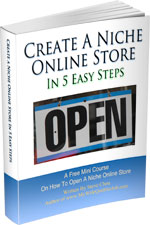
Ready To Get Serious About Starting An Online Business?
If you are really considering starting your own online business, then you have to check out my free mini course on How To Create A Niche Online Store In 5 Easy Steps.
In this 6 day mini course, I reveal the steps that my wife and I took to earn 100 thousand dollars in the span of just a year. Best of all, it's absolutely free!

